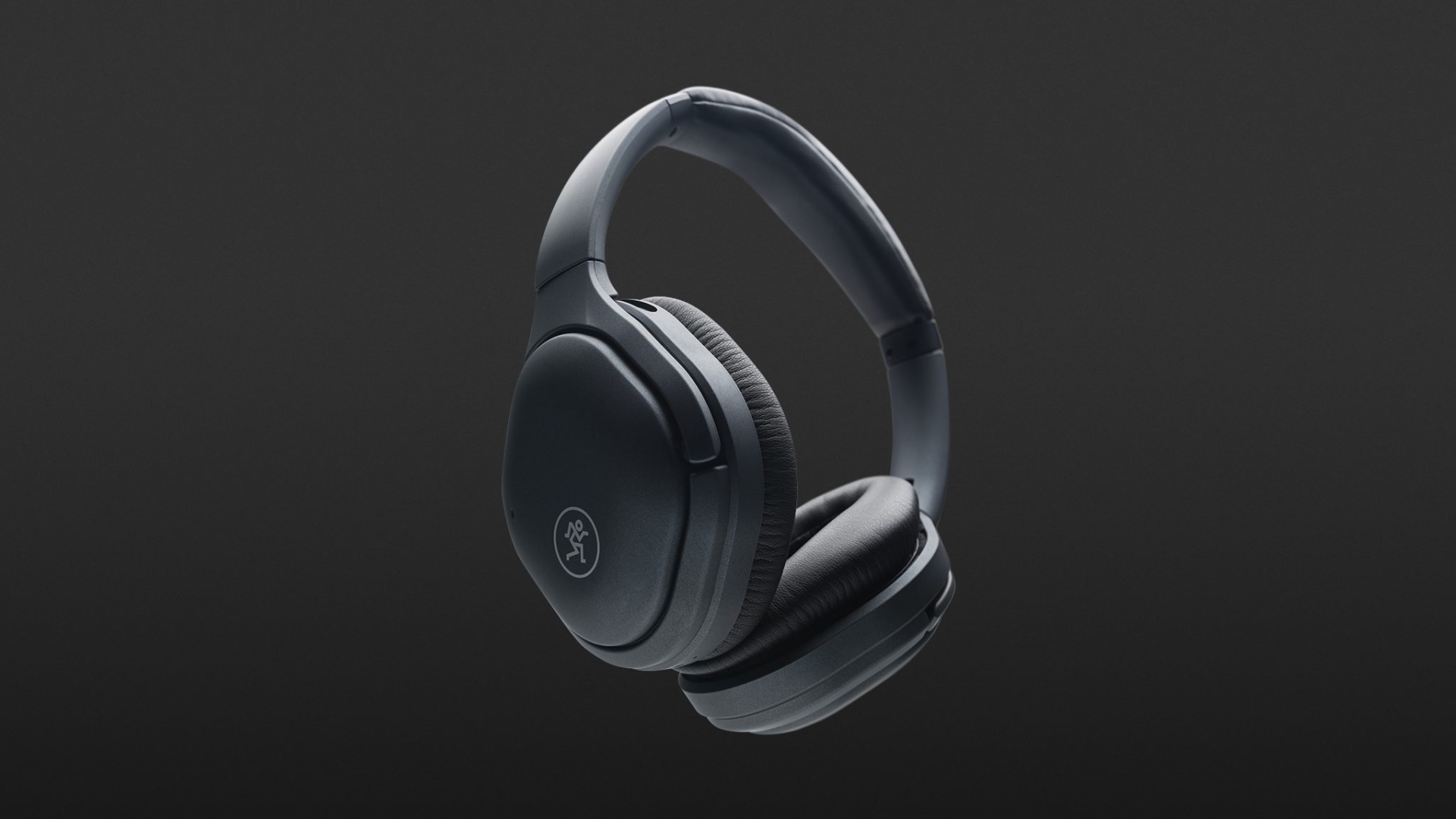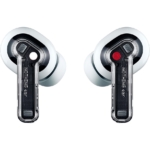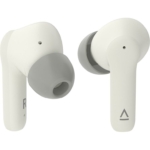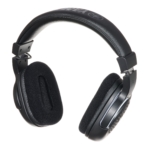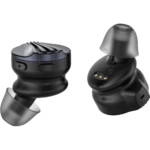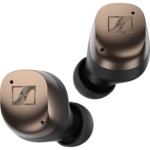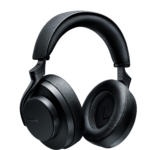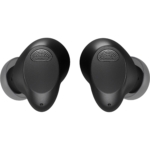Above all, the Mackie MC-50BTs impressed us with their good “usability”: They can be made very small and stowed away, they have a long battery life, they look pleasantly elegant and, thanks to touch operation, there is no need to get your phone (when used as an external player) out of your pocket very often. A little more accuracy in recognising touch gestures and a slightly more balanced bass response would certainly have raised the rating of the MC-50BT a little higher, but in general, listening to music and multimedia applications with the MC-50BT was a lot of fun. The price tag is perhaps a little too self-confident in view of the performance on offer, and the fact that competitors have quite strong products in the around 150-euro price range means we will have to see if the price goes down a little. If you are prepared to pay the extra fifty euros or so for the MC-60BT, then you can not only look forward to inductive charging and an additional analogue jack but also to a better signal-to-noise ratio for noise cancelling.
- long battery life
- very effective noise cancelling
- foldable design
- somewhat unbalanced bass range
- touch detection not always reliable
- ANC with slight background noise
With the MC-50BT and MC-60BT, American audio equipment manufacturer Mackie have launched two new pairs of consumer headphones. They feature Bluetooth and thus offer maximum freedom of movement while at the same time providing high-quality sound through Mackie’s new 40-millimetre drivers. The Mackie MC-50BT are touted by Mackie as headphones for “high-quality casual listening”, and they did quite well in our test.
The MC-50BT is the mid-priced model in Mackie’s new MC-BT series. In contrast to the earlier MC-40BT, it comes with “MIS Wide-Band Active Noise Cancelling” already on board, but unlike the more expensive MC-60BT, it is not HD Audio certified and is conventionally charged via cable rather than using induction like the top-of-the-line model.
Technical specification of the Mackie MC-50BT
As mentioned at the beginning, the MC-50BT uses the new 40-millimetre drivers that Mackie also uses in the wireless MC series. This gives these headphones a frequency response ranging from 20 Hz to 20 kHz with an internal impedance of 32 ohms (this is, of course, negligible in the case of wireless headphones, as the amplification is internal). Depending on the listening volume, the battery life reaches a remarkable figure of over 40 hours. Fast charging can be carried out via a USB-C socket on the underside of the right earpiece and takes around three hours to fully recharge. The earpieces are IPX4 certified and thus resistant to water splashes and dust particles (although I’m pretty sure that if sand grains got into the USB socket, it would lead to a significant functional impairment). Bluetooth version 5.0 is used, and AAC and SBC are available as codecs. The wireless range was within the typical scope that we see in our tests.
Appearance and handling of the Mackie MC-50BT
Both headphone pods can be folded in on a hinge so that they fit into the supplied case with a footprint of just 21 cm for transport. With a weight of 235 grams, these headphones are not particularly heavy, either on your head or in your bag. In fact, these over-ear headphones can be worn comfortably for a surprisingly long time, despite their closed design which is always accompanied by a bit of heat build-up. When unfolded, you can see the slight diamond shape of the ear pods, and this, in combination with the shimmering anthracite-coloured matt plastic, gives them a classy look that would not be out of place even in an airport business lounge. However, as chic as these rhombus-shaped earpads look, if they need to be replaced – and this is often necessary relatively quickly with closed headphones due to perspiration – you will have to resort to expensive original spare parts and cannot order just any old cheap earpad.
All operations are performed on the right side of the headphones. Here you will find an on/off/pairing button and a slide switch that activates the noise cancelling function. The back of the headphones is touch-sensitive, and the following functions can be called up using various gestures, swipe and tap commands:
- Play/Pause (2x tap)
- Short Ambient mode (press and hold)
- Louder (Swipe up)
- Quieter (Swipe down)
- Previous track (Swipe back)
- Next track (Swipe forward)
Apparently, the contact surface does not like hectic movements, and it tends to ignore them. With slow, deliberate gestures, the correct commands were successful about 80 per cent of the time – so even though it is not always reliable, it is generally usable. I also found something of a design fault in that activating the ambient mode (in which the integrated microphone is switched so you can hear yourself and the surroundings) is done by placing the palm of the hand on the device while calling up a voice assistant (Siri, Google, etc.) is done by pressing it for three seconds with one finger. These two gestures are very similar, so more often than not, you end up summoning the voice assistant even though you only wanted to listen to your surroundings for a moment.
How the Mackie MC-50BTs sound
I found that the overall sound of these headphones fulfilled the requirements of the most neutral reproduction, as there were only a few tonal peaks or troughs in the mid and treble range that were unpleasantly noticeable or disturbing. However, the bass was a little unbalanced, depending on the piece of music being listened to: While the low bass note in Dawuna’s “Lighthouse” at about 80 Hz would have benefited from a little more boost, the 50 Hz sub-bass of Rosalia’s “Despecha” really came up trumps. All in all, I would have liked a little more liveliness and impulsiveness in the dynamic of the highs – although this could, of course, be a deliberate tuning to make them suitable for users who want to wear the MC-50BT for a long time, for example during video conferences or gaming sessions, as a very dynamic and treble-heavy sound can be rather tiring.
The activation of the ANC (Active Noise Cancelling) not only showed a reduction of ambient noise and the emergence of slight background noise but also led to an audible change in the sound. Some frequencies in the bass range were boosted, others were lowered a little, and the tonality in the mids shifted audibly. This was okay because the noise cancelling did a really good job: From street noise to murmuring voices to thunderstorms, the MC-50BT filtered out ambient noise surprisingly effectively.
When using the hands-free function, the voice quality on both the transmitting and receiving sides was quite good. Although you lose a little bit of precision and clarity in the highs compared to your smartphone’s internal microphone, conversations were generally possible. It was a pity that Mackie hasn’t integrated a permanent ambient mode into the MC-50BT, as they did with their Mackie MP-20TWS True Wireless in-ears or the Mackie MC-60BT. After all, being able to hear your own voice in the room makes talking on the phone much more enjoyable.
Technical specifications
- Ear couplingOver-ear
- Typeclosed
- Transducer principledynamic
- Frequency response (headphones)20 - 20.000 Hz
- Impedance32 ohms
- Sound pressure level (SPL)@1 kHz: 97 dB +/- 2 dB
- Weight without cable235 g
What's in the box
- Travel case
Special features
- BT codecs: SBC, AAC
- BT version: 5.0







